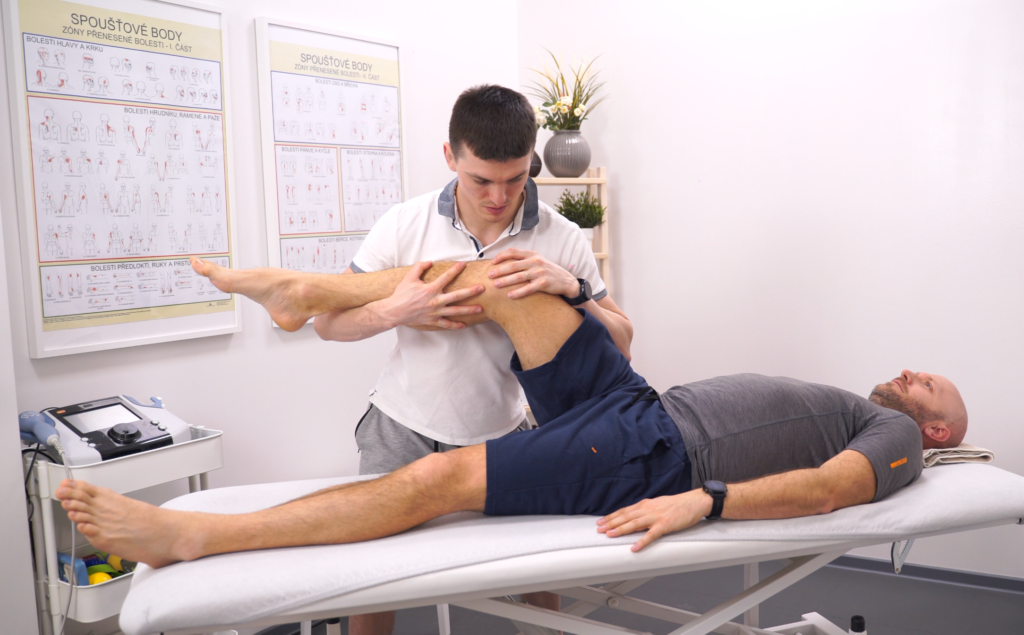Every day in our Physiocentre we meet clients who, in addition to back pain, are also worried about MRI findings. But what about the MRI results and how important are they for the correct diagnosis and subsequent therapy?
Unfortunately, not only among the general public, but also in some professional circles, outdated and scientifically unsubstantiated opinions prevail, which put the findings of structural damage on MRI on a pedestal.
“But what does science and science-based practice say? The patient is not an MRI!”
Advances in this field have been made mainly by studies that have focused on MRI results in asymptomatic populations (i.e. people without pain or other symptoms). In a 2014 study, magnetic resonance imaging over 3000 people without any difficulties. The incidence of disc degeneration in asymptomatic subjects increased from 37% in 20-year-olds to 96% in 80-year-old participants study and the incidence of disc protrusion increased from 29% at age 20 to 43% at age 80. The conclusion of the study is that the incidence of structural changes increases with age and is a natural part of ageing.
“It is almost certain that every adult has structural disc changes present. Even severe damage may not be painful implying that the pain may not stem from a damaged disc even if both things are present.”
Another interesting study focused on young male Air Force Academy cadets who did not experience any pain. She found that only 23% had no detectable findings on MRI imaging. 30% of candidates had at least one disc desiccation, 13% had at least one disc narrowing, 18% had disc protrusion, and 8% had disc extrusion.
Asymptomatic vertebral fractures were even observed in 2 of 350 (<1%) cadets.
“The severe disc damage diagnosed by MRI may have occurred years before the pain developed, which may have had a completely different origin. Focusing on MRI results can negatively affect the course of treatment because it can take us in the wrong direction.”
In the previous section, we focused on why structural finding is not the most important thing. With these findings, we can easily brush aside a client’s concerns about whether spinal physiotherapy can help, even when large-scale structural changes are evident. Let’s break this down even further with a measure of evidence-based medicine/physiotherapy.
A big structural change may not hurt, but can it be influenced? Yes, and even without direct treatment. A 2014 study showed that patients with sequestered herniated discs, experienced symptom resolution in a mean of 1.33 ± 1.34 months and radiographic resolution in 9.27 ± 13.32 months. These healing processes are therefore natural to the body, even in the most serious injuries, and the role of physiotherapy is to support these processes. Non-pharmacologically reduce pain, restore musculoskeletal function and create conditions to prevent further serious musculoskeletal disorders.
“To operate or not to operate? Science will tell, the condition and the patient’s opinion will decide!”
A fresh meta-analysis evaluating 24 studies with 1711 participants rated surgical treatment (discectomy) as more effective in eliminating pain in the short and medium term, but not significantly more beneficial than conservative treatments in the long term. Therefore, it is up to the patient’s discretion
,
on the basis of scientific evidence and the opinions of health professionals, which treatment modality to choose; the patient’s condition as determinedby examination and the evolution of the condition in response to conservative treatment should be the determining factors.
An excellent example is the case of a client of our Physiocentre.After about seven weeks of physiotherapy, he went from a state of severe radiating pain to a state where these pains had completely disappeared. This was despite the fact that the MRI that was done in the fourth week of physiotherapy found a massive disc extrusion. This was achieved thanks to our detailed examination, intensive physiotherapy of trigger points that can generate pain and pain transference (click here to watch the third video), joint mobilisations and movement therapy(see interesting exercises to do at home). More in the video below.
What you should remember (not only) from the content of the article:
1. patient is not an MRI, an MRI is just one of many scans.
2. The patient’s belief and willingness to work on their condition is key to the success of treatment.
3. The main therapist is the patient: ‘approach treatment as if you were an astronaut and you should fly to the moon’.
4. Surgery is indicated by the doctor, but he should be familiar with the studies and should inform the patient about them (as well as about the risks of surgery), who will decide on the basis of this.
5. Waiting for an operation or examination should be filled with (physio)therapy. It may be that this will be sufficient for recovery.
6. The cause of many pains, especially chronic ones, lies in certain changes in the central nervous system and no longer originates in damaged or overloaded tissues, and therefore standard therapy (even surgery) may not be successful. Make sure that you have been thoroughly examined by the relevant doctors, but also by a physiotherapist.
Examination and therapy in collaboration with a specialist is just one of the key things.
Read more about the other seven HERE.
Resources and useful links to studies:
1. https://pubmed.ncbi.nlm.nih.gov/30540719/
2. https://pubmed.ncbi.nlm.nih.gov/24630494/
3. https://pubmed.ncbi.nlm.nih.gov/25009200/
4. https://eymj.org/DOIx.php?id=10.3349/ymj.2002.43.3.283
5. https://www.joas.org.in/article.asp?issn=2666-7150;year=2021;volume=9;issue=1;spage=31;epage=38;aulast=Arfaaz
6. https://pubmed.ncbi.nlm.nih.gov/31030110/
7. www.fyzioc.sk
8. www.edufyt.sk
9. https://www.bfosteo.london/blog/are-anatomical-abnormalities-normal-in-a-healthy-population-very-high-percentage-of-abnormalities-found-by-scans-in-patient-who-werent-in-pain
10. https://www.ncbi.nlm.nih.gov/pubmed/25584950
11. https://www.ncbi.nlm.nih.gov/pubmed/21940544
12. https://www.ncbi.nlm.nih.gov/pubmed/25636988
13. https://www.ncbi.nlm.nih.gov/pubmed/25430861
14. http://bjsm.bmj.com/content/early/2018/06/09/bjsports-2018-099257
15. https://www.ncbi.nlm.nih.gov/pubmed/22835390
16. http://journals.sagepub.com/doi/abs/10.1177/2473011417S000311

